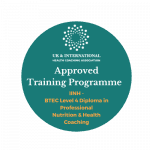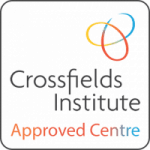The supermarket aisles are filled with a vast array of food products, each claiming to be the healthiest and best option for you. In this sea of choices, understanding how to read food labels is a valuable skill that empowers you to make informed decisions about what you consume. This blog post will serve as your ultimate guide to deciphering food labels and making healthier choices for you and your family.
Reading Food Labels 101
The Nutrition Facts Panel
Serving Size:
The first piece of information on a food label is the serving size. This is crucial because all the nutritional data that follows is based on this specified portion. Make sure to compare this to your actual serving size, as it can affect your nutrient intake.
Calories:
The calorie count per serving is an indicator of the energy the food provides. It’s essential to consider this in the context of your daily calorie needs for better weight management.
Macronutrients:
- Fat: Shown as total fat content but will also show breakdown of how much saturated fat the product contains. Some products may add supplementary information and include grams of unsaturated fats (monounsaturates, polyunsaturates).
Check ingredients list and aim to reduce your intake of ‘vegetable oil’ that is added to processed foods.
- Carbohydrates: Carbohydrates are further divided into sugars. Fibre is sometimes included as supplementary information. Higher fibre content is generally healthier, while you should be mindful of added sugars, which can lead to excessive calorie intake and impact blood glucose levels.
- Protein: Protein is essential for body maintenance and growth. Choose products with an adequate protein content that suits your dietary needs.
Micronutrients:
These are sometimes included as supplementary information.
- Vitamins: The label may list vitamins such as Vitamin A, C, or D. Make sure your food choices provide a substantial amount of essential vitamins to meet your daily requirements.
- Minerals: Essential minerals like calcium, iron, and potassium are also included. Be aware of these, especially if you have specific dietary needs.
Understanding Reference Intake (%RI)
The Reference Intake (%RI) helps you understand how much a nutrient in a serving of food contributes to a daily diet. These RIs are consistent with dietary advice for the general population and have been set for labelling purposes, based on a 2000 kcal (8400 kJ) diet.
Ingredients List
The ingredients list is an essential part of the label because it discloses what the product contains. Ingredients are listed in descending order of weight, with the most significant ingredient listed first. Pay attention to this list, as it can help you identify ultra processed foods with many additives and preservatives.
Allergen Information
If you have allergies or food intolerances, always check the allergen information on food labels. The EU has a list of 14 food allergens that must be declared if they are used as ingredients in the product, such as cereals containing gluten, eggs and dairy. See here for the full list.
Additional Information
Don’t forget to check for any other relevant information on the label, such as expiration dates, storage instructions, and any claims made by the manufacturer, such as “organic,” “non-GMO,” or “low sodium.”
Understanding how to read food labels is an essential skill for making healthier dietary choices. By familiarising yourself with serving sizes, the nutrition facts panel, percent reference intake, ingredients, allergen information, and any additional details, you can confidently choose foods that align with your nutritional goals. Start paying closer attention to food labels, and you’ll be well on your way to a healthier, more informed approach to your diet.
To learn more about the how reading food labels can benefit your health, join our upcoming Nutrition & Health Coaching Diploma.












